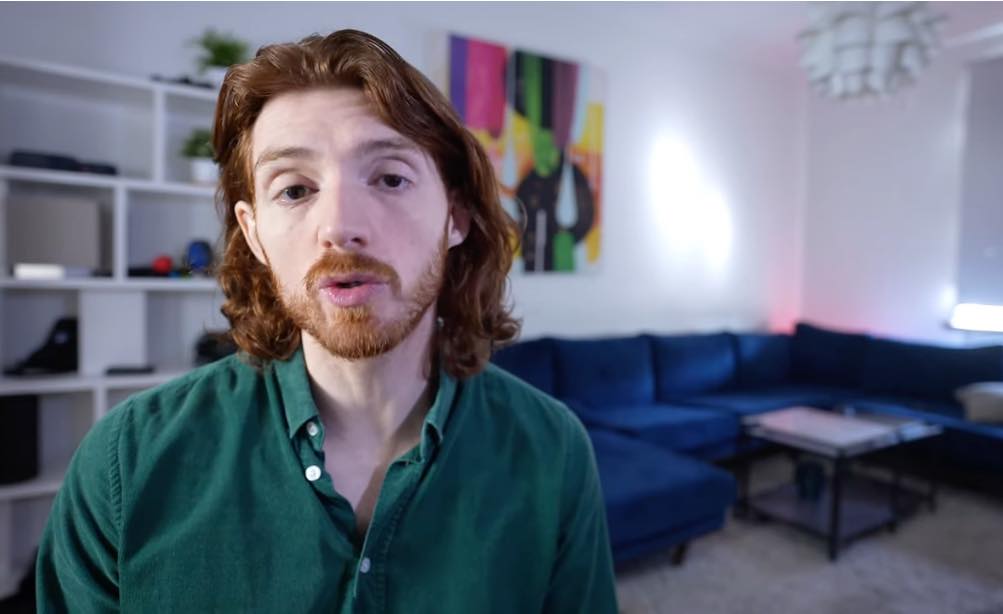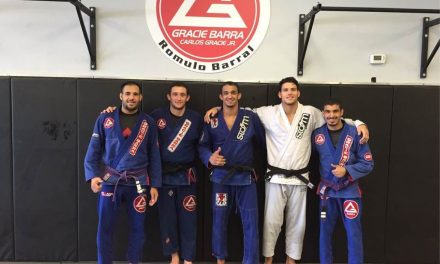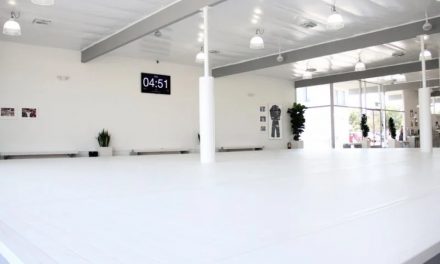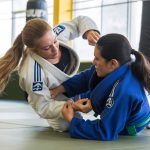In this video, Jon Thomas explores ways to develop a mindset and strategies for individuals looking to successfully engage with larger and stronger opponents in jiu-jitsu. Many people have self-limiting beliefs about their ability to overcome size and strength differences, but it is entirely possible to develop techniques and approaches that level the playing field.
Understanding one’s own physical abilities and adapting moves to suit them is a key factor in overcoming larger, stronger opponents. However, it is also important not to rely on these preconceived notions and make sure to adapt and adjust as needed during the match. The right mindset, combined with strategic choices and a focus on body positioning, can lead to successful outcomes regardless of size and strength disparities.
Key Takeaways
- Develop a mindset that embraces the possibility of overcoming size and strength differences.
- Focus on body positioning, strategy, and tactics to leverage one’s skills effectively against larger opponents.
- Design a game plan that consists of moves that work well regardless of the opponent’s size, while also being aware of personal boundaries and when to make exclusionary decisions.
Shifting Your Beliefs
Being able to defeat someone who is bigger and stronger than you might seem an impossible task, but it is absolutely achievable. The key to accomplishing this lies in altering your mindset and focusing on the strategic and tactical components of your game. To begin, it is essential to believe wholeheartedly that it is possible for someone smaller to defeat a physically larger opponent. This will motivate you to work towards finding the right technical solutions and adapting your game accordingly.
In jiu-jitsu, it is common to witness smaller individuals defeating larger opponents. Given these examples, it is undeniable that overcoming an opponent who is just slightly heavier or stronger than you is within your reach. The only barrier standing between you and victory is the level of technical knowledge you possess. While your opponent may indeed have a physical advantage, the ultimate goal should be to develop your technical skills in order to surmount this challenge.
When confronting a bigger opponent, it is crucial to maintain a problem-solving mindset rather than succumbing to the mentality that size and strength are insurmountable factors. Assessing each failed position and evaluating the technical errors that contributed to it can help you determine more effective moves and strategies.
As you hone your game, remember that body position is the primary determining factor for choosing your next moves. Stay present in the moment, and allow decisions to arise organically based on your opponent’s body position. This will not only make you a more adaptable fighter but will also reduce the likelihood of analysis paralysis.
To develop a versatile and effective jiu-jitsu game, focus on techniques that will work against opponents of varying sizes. Remove any moves that are ineffective against heavier or stronger opponents, and strive to create a game that functions well across a vast range of challenges. Of course, in certain situations, excluding techniques based on the size and strength of your opponent is a sensible decision. However, your primary objective should be to adopt a game that works for the majority of opponents, regardless of their physical attributes.
In conclusion, shifting your beliefs about defeating larger opponents is a critical initial step in improving your overall jiu-jitsu game. By focusing on technical proficiency, maintaining a problem-solving mindset, and learning to adapt your strategies based on your opponent’s body position, you’ll be well on your way to becoming an unstoppable force on the mat.
Mindset is Key
To conquer opponents who are larger and stronger, it is crucial to have the right mindset. Many individuals have limiting beliefs and insecurities that prevent them from achieving victory against bigger opponents. However, numerous examples in Jiu-Jitsu prove that size and strength can be overcome with the right techniques and strategies.
A vital aspect of developing this mindset is to focus on one’s technical abilities instead of on the opponent’s size or strength. Individuals should always strive to find the right technical solution and make the necessary adjustments to their game when facing challenges. Refusing to acknowledge excuses allows a person to push past frustrations and continue to grow their skill set.
In Jiu-Jitsu, as with any sport, one will experience victories and losses. To evolve and improve, it is essential to analyze one’s own performance and figure out the weak points to identify the most effective tactics. Ignoring thoughts that blame the opponent’s physical attributes can help a person focus on enhancing their own skills and techniques.
It is essential to have an open mind and be adaptive to different situations while competing. A person should never be fixated on a specific move or strategy even when facing a larger opponent, as this can create analysis paralysis. Instead, they should focus on their technique, positioning, and ability to react to the opponent’s moves.
Developing a versatile game and having a set of moves that work against various opponents, regardless of their size, is crucial. This might require making some exclusionary decisions during the match, like opting not to perform specific moves if they do not cater to certain size differences. However, a person should generally aim for their techniques to be effective against a wide range of opponents.
In summary, having the right mindset is key to overcoming larger and stronger opponents in Jiu-Jitsu. By focusing on technical growth, being present in the moment, and creating a versatile game, individuals can successfully tackle the challenges that come their way.
Physical Struggles and Technical Solutions
When faced with opponents larger or stronger than themselves, many people might doubt their ability to succeed. The truth is, size and strength can be overcome through technical skill and a strong mindset. In order to triumph in such situations, one must first believe that it’s possible to defeat someone bigger or stronger.
For success in a competition like Jiu-Jitsu, this belief is essential. Countless examples of smaller individuals beating larger competitors prove that it can be done. Even at minimal weight differences, like 20lbs, overcoming these physical barriers is within reach.
The key is not to dwell on the opponent’s physical advantage. Instead, focus on developing technical movements to counter their strength or size. One must also stay committed to reaching their goal and be willing to adapt and change their strategy as needed.
Here are a few tips to help tackle these physical challenges:
- Understand that body position is critical in deciding the next course of action, not size or strength. Moves must be chosen based on the given position, regardless of the opponent’s physicality.
- Be adaptable. Avoid using specific moves in mind or focusing on a set strategy when facing a larger opponent. Remain present in the moment and make decisions based on the situation.
- Design your game in a way that works regardless of the opponent’s size. If a technique fails because of a 20lb weight difference, consider removing it from your game plan.
- Account for the opponent’s size when selecting moves. It’s okay to exclude certain techniques if they are unlikely to work against a larger or stronger person.
Ultimately, a friendly approach, an adaptive strategy, and a strong emphasis on technical skill can help fighters overcome physical challenges. Remember, the more one believes in their ability to win, the more likely they are to find a way to do so.
Techniques and Size Effect
In the world of Jiu-Jitsu, the belief that a smaller person can defeat a much larger and stronger opponent is not only possible but has been proven on numerous occasions. The key lies in the combination of the right techniques, positioning, mindset, and strategy.
The primary factor to consider when confronting a larger and stronger adversary is body position. Regardless of the opponent’s size, their body position dictates the moves that can be made. It is important not to focus on specific moves before a match, as doing so can lead to analysis paralysis, preventing one from making the needed adjustments in real-time.
When designing a game plan, most of the techniques should work regardless of the opponent’s size. If a technique is ineffective against someone 20 lbs heavier or a bit stronger, it might not be a good move overall. However, it is essential to recognize moves that may not work against larger opponents and exclude them when facing such an opponent. For instance, a triangle choke may not be effective against someone 350 lbs, even though it works well against smaller opponents. It’s not about looking for specific moves but rather filtering out options based on the opponent’s size and ability.
In addition to technique, mindset also plays a crucial role when facing larger opponents. By overcoming insecurities and limiting beliefs, one can focus on developing the technical skills required to defeat stronger adversaries. This involves constant troubleshooting and refining of techniques that are not working, rather than blaming the opponent’s size as an excuse.
Furthermore, the ability to stay present and adapt to the situation is vital. Engaging in exclusionary decision-making instead of inclusionary allows one to remain aware of the available options, which leads to making better choices during a match.
In conclusion, the combination of the right technique, body positioning, and mindset can enable a smaller practitioner to defeat a larger opponent in Jiu-Jitsu. By focusing on these factors and continuous improvement, the size effect can be reduced, allowing for successful matches against stronger rivals.
Focus on Strategy and Tactics
In the quest to overcome a larger and stronger opponent, embracing the right mindset is the first step. Limiting beliefs must be cast aside to acknowledge that it is possible to beat someone much bigger and stronger than oneself.
In the world of Jiu-Jitsu, a smaller individual taking on a larger one is not a rarity, and countless examples of such feats can be found. Achieving this feat requires mastering techniques to operate effectively against someone slightly heavier or more powerful.
Body position is the most crucial factor in the choice of moves to be executed in a match, not the opponent’s size or strength. If an opponent’s body is in a specific position, the choice of moves should be based on the positions available.
It’s essential not to focus on a specific move when taking on a larger individual. Instead, by being present in the moment, opportunities will arise that can be used to the smaller person’s advantage. Developing a gameplay that works efficiently against opponents of any size is crucial, and techniques that are ineffective against heavier or more potent opponents should be removed from one’s repertoire.
Of course, some moves need adjustments depending on the size and strength of the opponent. To avoid analysis paralysis, it is essential to know the limits and limitations of specific moves, such as a triangle choke, which may not work on a significantly larger opponent. Being exclusionary in the decision-making process will help in applying the right techniques in various situations.
In conclusion, the path to defeating bigger and stronger adversaries lies in the combination of a resilient mindset, strategic and tactical approaches, and being adaptable in the application of techniques.
The Importance of Body Position
In the quest to defeat bigger and more robust opponents, one must consider the significance of body position in martial arts such as Jiu-Jitsu. Correct body position plays a crucial role in dictating the next moves and overcoming physical disadvantages like size and strength.
When facing an opponent, one must be present in the moment and adapt to the given situation instead of focusing on pre-determined moves. Having a predetermined move can lead to analysis paralysis and potential failure. Adjusting to the opponent’s body position allows for flexibility in choosing the most effective move at any given time.
To successfully beat larger opponents, it is essential to design a game plan that works regardless of the opponent’s size. Techniques that only work on smaller opponents should be removed from the repertoire, as they limit adaptability. However, it is necessary to acknowledge that some moves do have a limit based on one’s physical abilities, such as the triangle choke. It is vital to recognize and remember these limits to ensure that appropriate moves are selected during the match.
Excluding certain moves is a better strategy than focusing on specific moves when facing larger opponents. By excluding moves that one knows will be ineffective, the decision-making process becomes more efficient, and the brain can work on other viable options in real-time. Staying in a natural flow state increases the chances of success against stronger opponents.
In conclusion, recognizing the importance of body position and adapting to each situation can lead to success against larger, stronger opponents. Emphasizing adaptability and flexibility in one’s game plan, while excluding moves that are ineffective against bigger opponents, creates an effective strategy for overcoming physical disadvantages.
Avoiding Analysis Paralysis
When trying to overcome a larger and stronger opponent in Jiu-Jitsu, it is essential to be aware of analysis paralysis. This phenomenon can hinder your progress by preventing you from being present and focused during the match. To avoid this, one should not enter the match with a specific move in mind, as this may lead to getting stuck if the opponent’s body position does not allow for that move.
It is vital to understand that body position is the critical deciding factor for the moves to be executed, regardless of the opponent’s size or strength. During training, you should aim to optimize your techniques to work against various opponent sizes, focusing on versatile moves that can be applied in different situations. This will ensure that your game remains adaptable and effective against multiple opponents.
However, it is also essential to acknowledge that some moves may need to be excluded from your game plan when facing larger opponents. For example, the triangle choke may not be suitable for executing versus someone significantly larger and stronger than you. In such cases, it’s good practice to exclude options that may be ineffective due to size differences, allowing your mind to automatically search for other available moves.
In summary, avoiding analysis paralysis in Jiu-Jitsu involves embracing versatility in your techniques and understanding your limitations against larger opponents. By staying present and allowing your game to adapt to various body positions, you can improve your chances of overcoming bigger and stronger foes on the mat. In doing so, you’ll expand your abilities and become a more well-rounded practitioner.
Designing Your Game
When planning how to improve your game and defeat larger opponents, it is essential to focus on developing a strong mindset and creating a game strategy that can adapt to your opponent’s size and strength. This involves being aware of your own limitations and working towards building up techniques and strategies that can be applied against opponents of different sizes.
Body position plays the most crucial role in determining your possible moves during a match, so concentrating on your opponent’s size and strength alone will not yield the desired results. Rather, it’s essential to be present in the moment and choose your moves based on the options available due to your opponent’s positioning. This approach minimizes the chances of freezing up during the match or failing to execute a move due to your opponent’s physical attributes.
To design a game plan that can defeat bigger and stronger opponents, ensure that most of your techniques are applicable to various sizes within reason. If a technique only works against someone 20 pounds lighter, it might not be a good fit for your game plan. However, it is also crucial to recognize that some moves have limitations based on the opponent’s size. It is okay to exclude specific moves from your game plan against larger opponents, as long as it doesn’t hinder your overall performance.
The key to success lies in building a well-rounded game plan that remains effective against opponents of various sizes. Focus on mastering techniques that can be applied to different body types and sizes while being aware of moves that might not be suitable for larger opponents. This approach will help you stay present in the moment, allowing you to rapidly adapt to the situation at hand and increase your chances of achieving victory against bigger and stronger opponents.
Identifying Size and Strength Boundaries
To defeat a larger and stronger opponent, a crucial step is recognizing that size and strength are not the primary factors in determining the outcome of the match. Instead, body position plays a significant role in deciding the next moves for both fighters. The key is to be flexible in one’s approach and focus on adapting to the opponent’s moves and body positioning.
Despite the size and strength differences, it is essential to believe in one’s own abilities and not be hindered by limiting beliefs. Numerous examples in Brazilian Jiu-Jitsu demonstrate that smaller individuals have successfully defeated larger, stronger opponents.
Having a game plan that is effective regardless of the opponent’s size is an essential aspect of preparing for a match. It is vital to have techniques that work reliably against opponents of various sizes and strengths. This approach minimizes the need for situational moves that depend on the physical attributes of the opposition.
However, it is also essential to recognize the physical limitations that one might encounter, such as the size of an opponent’s shoulders and neck when attempting a triangle choke. By understanding these boundaries, fighters can make educated decisions about which moves to exclude during a match without being constrained by preconceived notions.
Ultimately, being adaptive and focused on the present moment is critical in overcoming an opponent’s larger size and strength advantage. By employing techniques that work universally and understanding personal limits, fighters can gain the confidence and skill set necessary to succeed against opponents of various sizes.
Exclusionary vs Inclusionary Decision Making
In the world of competitive martial arts, it’s common for fighters to face opponents who are larger or stronger than themselves. Developing an effective strategy for dealing with this is crucial, as it helps individuals build a game plan that works against a wide range of opponents. In this process, it’s important to distinguish between two main decision-making approaches: exclusionary and inclusionary.
Exclusionary decision making involves recognizing certain techniques or moves that may not be effective against a specific opponent due to factors such as their size or strength. For instance, an athlete may decide to avoid attempting a triangle choke during a match if they know their opponent is significantly larger than them. This approach allows the athlete to focus on other available techniques, without being hindered by moves that are less likely to succeed.
In contrast, inclusionary decision making is when an individual enters a match with the intention of executing specific techniques, regardless of their opponent’s size or strength. This can result in analysis paralysis, as the athlete becomes too focused on a particular move, even if the opponent’s body positioning does not support it.
To optimize performance against larger or stronger opponents, it is important to adopt a more exclusionary mindset. By understanding the limitations of certain techniques, athletes can make more informed decisions while remaining present in the moment. This allows them to adapt to their opponents and identify alternative moves when necessary.
A key aspect of this approach is developing a game plan that works well against various opponents, without relying heavily on moves that may be less effective against larger individuals. By cultivating a diverse range of techniques, martial artists can ensure that they’re prepared to face any opponent, no matter their size.
It’s also crucial for athletes to remain focused on their opponent’s body position, as this ultimately determines the available moves. Understanding and adapting to an opponent’s body position helps avoid being stifled by size or strength differences.
In conclusion, adopting an exclusionary decision-making approach can lead to more effective outcomes when facing larger or stronger opponents. By acknowledging the limitations of certain moves and focusing on opponents’ body positions, athletes can develop a versatile and adaptive skill set that helps them triumph over a diverse array of challenges.
Specific Moves for Larger Opponents
When facing larger opponents in jiu-jitsu, certain strategies can be quite effective. To overcome size and strength differences, focusing on the technical aspects of the moves rather than relying on power is crucial. Here are a few concepts and techniques that could be helpful in dealing with bigger opponents.
1. Mindset is key
Believing in the ability to defeat a larger opponent is essential. Maintain confidence in your techniques and continue experimenting and refining them to face any challenge.
2. Body position matters
Your opponent’s body position, not their size and strength, should dictate the moves you choose. Select techniques that can work regardless of your opponent’s size, and avoid forcing specific moves that may not be suitable for a particular situation.
3. Use moves that scale well against larger opponents
Some techniques are more effective against larger opponents than others, so consider incorporating these moves into your arsenal. For example:
- Keep the game grounded and focused on leverage to counter the strength advantage
- Utilize open guard techniques such as butterfly, X-guard, and one-legged X-guard to off-balance larger opponents
- Employ moves like arm drags and collar chokes that target weak points in bigger opponents
4. Exclude certain moves based on size limitations
Acknowledge and accept limitations in certain techniques when facing larger opponents. For example, a triangle choke may not be effective against an opponent with broad shoulders and a thick neck. Approach these situations with a flow state mentality, adapting and excluding unsuitable moves as needed.
In summary, to be successful against larger opponents, maintain a positive mindset, focus on technical aspects, select moves that scale well against bigger adversaries, and exclude unsuitable moves based on size limitations. With persistence and dedication, overcoming challenges posed by larger opponents is achievable.







